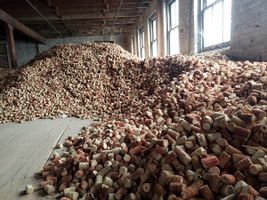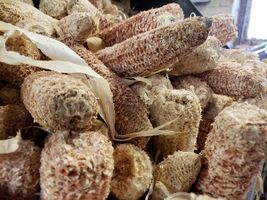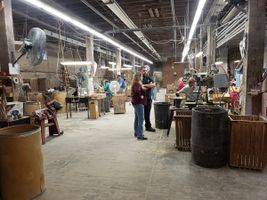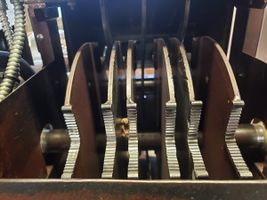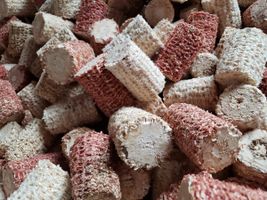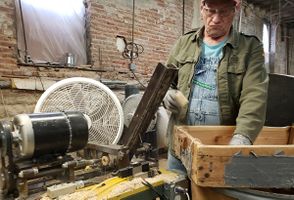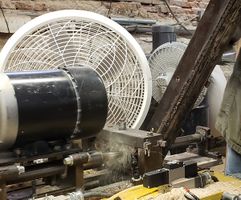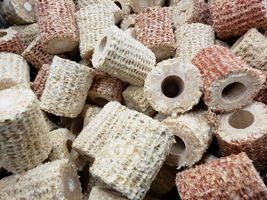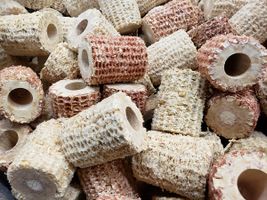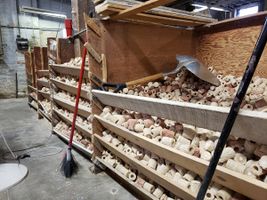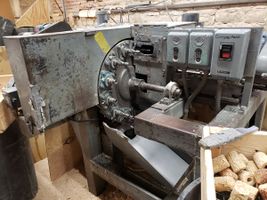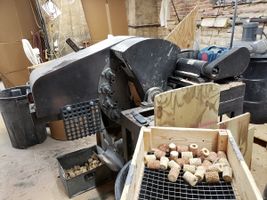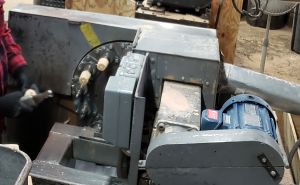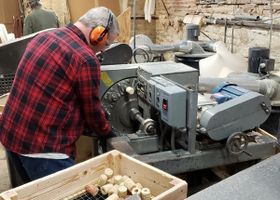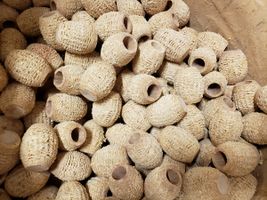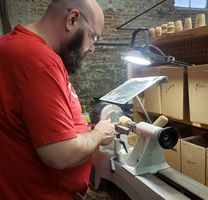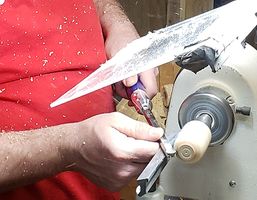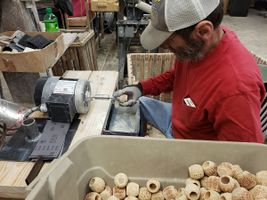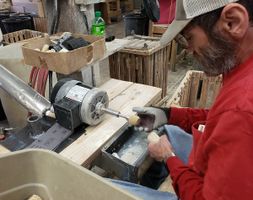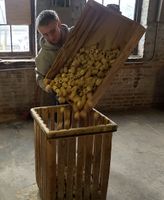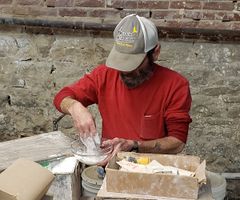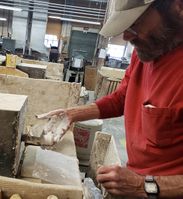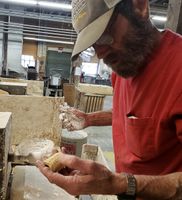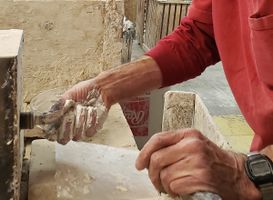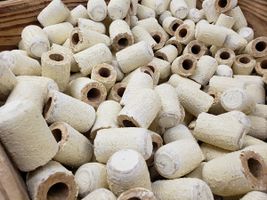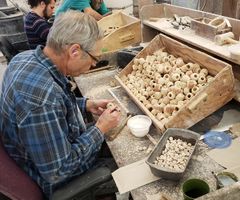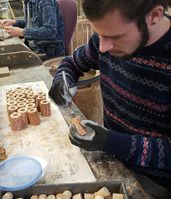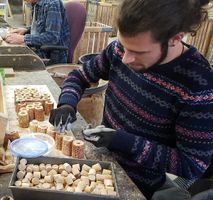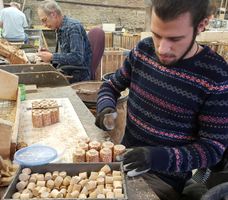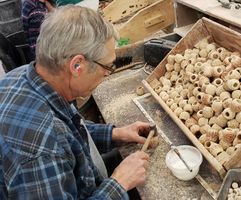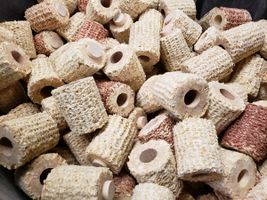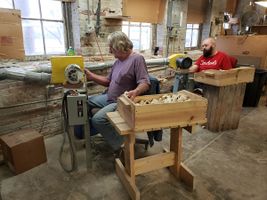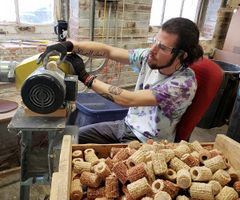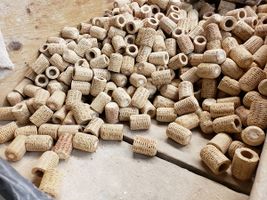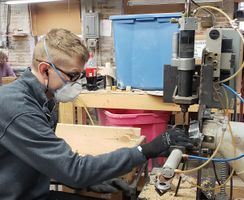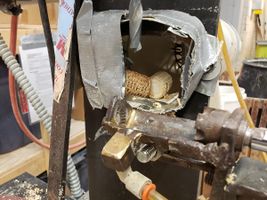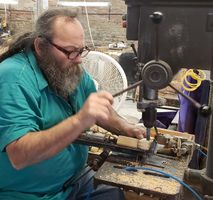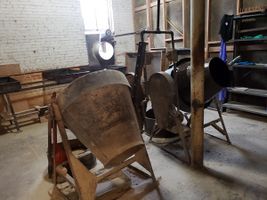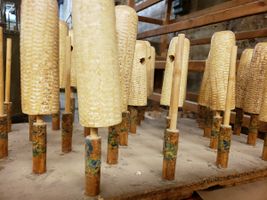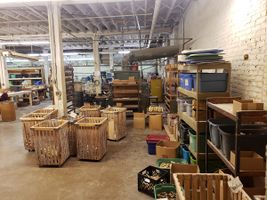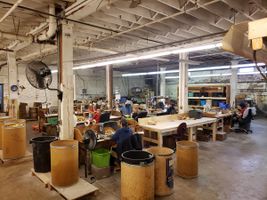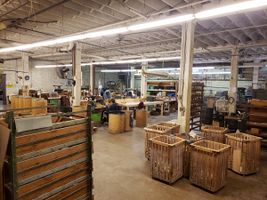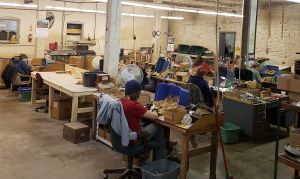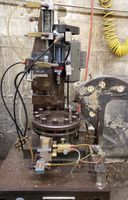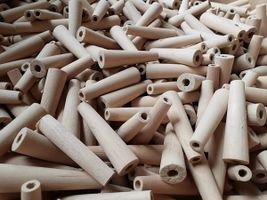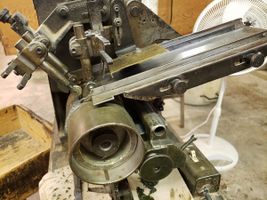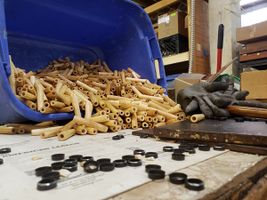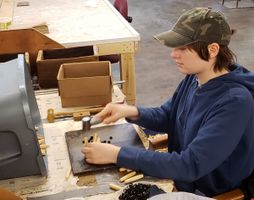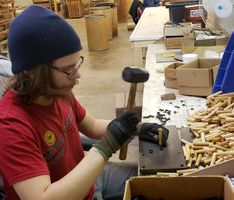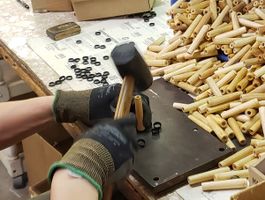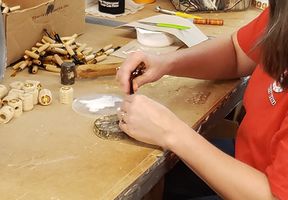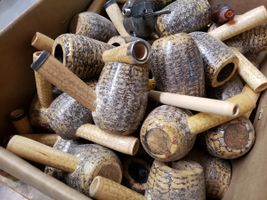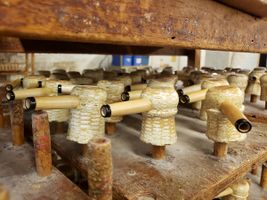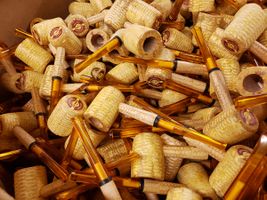Missouri Meerschaum Factory Tour: Difference between revisions
No edit summary |
No edit summary |
||
| Line 21: | Line 21: | ||
File:MissouriMeerschaum-after-drilling-chamber2.jpg|Cobs after drilling chamber | File:MissouriMeerschaum-after-drilling-chamber2.jpg|Cobs after drilling chamber | ||
File:MissouriMeerschaum-after-drilling-chamber.jpg|Cobs after drilling chamber | File:MissouriMeerschaum-after-drilling-chamber.jpg|Cobs after drilling chamber | ||
File:MissouriMeerschaum-drilled&ready4shaping.jpg|Cobs waiting to be shaped | File:MissouriMeerschaum-drilled&ready4shaping.jpg|Cobs waiting to be shaped | ||
File:MissouriMeerschaum-shaping-machine1.jpg|One of several fraising (shaping) machines used for some of the standard shapes | File:MissouriMeerschaum-shaping-machine1.jpg|One of several fraising (shaping) machines used for some of the standard shapes | ||
| Line 30: | Line 29: | ||
File:MissouriMeerschaum-lathe.jpg|Many of the shapes are hand turned on one of several lathes | File:MissouriMeerschaum-lathe.jpg|Many of the shapes are hand turned on one of several lathes | ||
File:MissouriMeerschaum-lathe2.jpg|Lathe work | File:MissouriMeerschaum-lathe2.jpg|Lathe work | ||
File:MissouriMeerschaum-sanding.jpg|Sanding the outside of the bowls to smooth and carefully refine the shape | File:MissouriMeerschaum-sanding.jpg|Sanding the outside of the bowls to smooth and carefully refine the shape | ||
File:MissouriMeerschaum-sanding2.jpg|More sanding | File:MissouriMeerschaum-sanding2.jpg|More sanding | ||
| Line 40: | Line 37: | ||
File:MissouriMeerschaum-plastering2.jpg|Plastering detail | File:MissouriMeerschaum-plastering2.jpg|Plastering detail | ||
File:MissouriMeerschaum-plastered-bowls.jpg|Bowls drying after plastering (takes a day or so before they can be sanded again) | File:MissouriMeerschaum-plastered-bowls.jpg|Bowls drying after plastering (takes a day or so before they can be sanded again) | ||
File:MissouriMeerschaum-plugging1.jpg|Some of the models have maple plugs glued into bottoms, others do not require one. Here the craftsman is applying glue in preparation for the plug | |||
File:MissouriMeerschaum-pluging1b.jpg|A different take on the gluing process of plugging | File:MissouriMeerschaum-pluging1b.jpg|A different take on the gluing process of plugging | ||
File:MissouriMeerschaum-plugging2.jpg|Pressing in the maple plugs | File:MissouriMeerschaum-plugging2.jpg|Pressing in the maple plugs | ||
| Line 51: | Line 49: | ||
File:MissouriMeerschaum-shank-drilling-machine.jpg|A machine that drills the hole for the shank | File:MissouriMeerschaum-shank-drilling-machine.jpg|A machine that drills the hole for the shank | ||
File:MissouriMeerschaum-drilling-bowl4shank.jpg|Another take on drilling for the shank using a standard drill press with a jig | File:MissouriMeerschaum-drilling-bowl4shank.jpg|Another take on drilling for the shank using a standard drill press with a jig | ||
File:MissouriMeerschaum-laquer-tumbling.jpg|Lacquer is applied to some pipe bowls by tumbling, some are sprayed, some | File:MissouriMeerschaum-laquer-tumbling.jpg|Lacquer is applied to some pipe bowls by tumbling, some are sprayed, some are both tumbled and sprayed, and some are left unfinished altogether | ||
File:MissouriMeerschaum-MacAurther-bowls.jpg|MacAurther Model cob bowls ready for stems | File:MissouriMeerschaum-MacAurther-bowls.jpg|MacAurther Model cob bowls ready for stems | ||
File:MissouriMeerschaum-assembly-room3.jpg|Assembly room and spray both area | File:MissouriMeerschaum-assembly-room3.jpg|Assembly room and spray both area | ||
| Line 57: | Line 55: | ||
File:MissouriMeerschaum-assembly-room1.jpg|Assembly room | File:MissouriMeerschaum-assembly-room1.jpg|Assembly room | ||
File:MissouriMeerschaum-assembly-room2.jpg|Assembly room | File:MissouriMeerschaum-assembly-room2.jpg|Assembly room | ||
File:FileFileMissouriMeerschaum-shank-drilling-machine.jpg|I believe this machines is used to drill shanks and prepare them for the | File:FileFileMissouriMeerschaum-shank-drilling-machine.jpg|I believe this machines is used to drill shanks and prepare them for the ferrule | ||
File:FileMissouriMeerschaum-shank-blanks.jpg|A pile of shank blanks | File:FileMissouriMeerschaum-shank-blanks.jpg|A pile of shank blanks | ||
File:MissouriMeerschaum-shank-texturing-machine.jpg|The machine that adds the corncob like pattern in ink to the maple shanks | File:MissouriMeerschaum-shank-texturing-machine.jpg|The machine that adds the corncob like pattern in ink to the maple shanks | ||
| Line 67: | Line 65: | ||
File:MissouriMeerschaum-gluing-shanks.jpg|Gluing shanks with stems into bowls | File:MissouriMeerschaum-gluing-shanks.jpg|Gluing shanks with stems into bowls | ||
File:MissouriMeerschaum-cobs-with-shanks2.jpg|Cobs with shanks, and what appears to be a tenon cutter | File:MissouriMeerschaum-cobs-with-shanks2.jpg|Cobs with shanks, and what appears to be a tenon cutter | ||
File: | File:MissouriMeerschaum-cobs-with-shanks3.jpg|Cobs with shanks after lacquering | ||
File:MissouriMeerschaum-Barrel-of-cobs.jpg|A barrel of corncob pipes, ready for for packaging and shipping to their new homes | File:MissouriMeerschaum-Barrel-of-cobs.jpg|A barrel of corncob pipes, ready for for packaging and shipping to their new homes | ||
</gallery> | </gallery> | ||
Revision as of 03:02, 25 March 2019
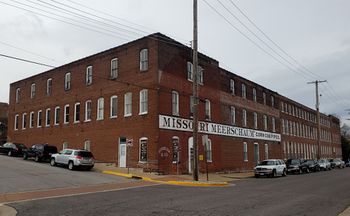
The following photos and narrative are from a factory tour on my visit in March of 2019. The wonderful old building is just across the road from the Missouri River, which can be seen out old windows that originally supplied the light to work by. The corner section is the original building, which was added onto in various stages, both upstairs and upriver, to keep up with the growing demand for cobs in the early to middle 20th century. Henry Tibbe made the early pipes using a foot powered trundle lathe and other hand tools in a much smaller workshop, and resisted the notion of scaling up as demand increased.
Henry's son, Antone Tibbe is responsible for the building and additions, and was the primary force in the scaling up of the company. Most of the third floor is now used for housing an inventory of cobs (aged at least 2 years before being crafted into pipes). There is also ample storage for retired machines, which are often gleaned for parts to maintain the machines that are still in production. The second floor has more cob storage, as well office space, and a wonderful museum and gift shop. The making of pipes, packaging, and the shipping and receiving area on the first floor. There is an old freight elevator facilitating the production by transferring cobs and various parts and suppiles between floors. It is driven by the original belt and cable system which was first power by steam, and later converted to electricity. It is still carefully controlled using the same antiquated pulley system. A false move can mean the unspooling of a large cable. Thankfully that is rare!
Most of the older machines still in production were designed and built by a nearby machine shop that is owned and operated by the same family today as had originally built them. And they still maintain them. Some the machines date back to when the factory was powered by steam and Anton Tibbe, the founder's son and successor needed powered machines to meet the growing demand. Antone later brought electric power to Washington to replace the steam in order to keep the machinery churning out cobs. There is an old Tibbe Power Company building standing just to the north of the factory on the same street.
At the time of my visit the company had a total of 35 employees, 5 were in the office, 2 work full time with growing, harvesting, and shelling the corn cobs across the Missouri river from the factory (I hope to visit that part of the operation at some point), and the other 28 or so employees were working on various stages of making the pipes.
Several of the pipe makers pictured in the photos have worked for Missouri Meerschaum for thirty years, others are younger, and learning the ropes. The workers I spoke with took a great deal of pride in their work and being part of an American tradition that is enjoyed Worldwide.
One of the great appeals of the Missouri Meerschaum Company is the tradition, another is the vertical integration. The "pipe corn" as it is called, grown by Missouri Meerschaum is now a high bred of 4 varieties designed to yield larger thicker cobs, and originally developed in the 1960s. Even the grain is used, though not by Missouri Meerschaum. Some of it is being used by the Pinckney Bend distillery to make whiskey. I really need to try that paired with smoking one of my cobs! Some of the cobs that are tos small for being fashioned into pipes are made into duck calls by a local Washington woodworker.
- Factory Tour, March 2019
